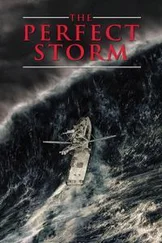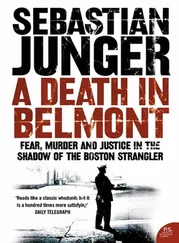Childs quickly realized that he was losing the competition not to stand out.
“I was in really rough shape. My boots weren’t broken in, and I’d gotten blisters on my heels before I was captured,” he says. “The days went on, and the skin was rubbed literally to the bone. By the fourth day I was having trouble keeping up.” Childs believed that he and Hutchings, the U.S. citizens, were the most valuable hostages, “but you could burn one American and still have one left over.”
From time to time the hostages discussed the possibility of trying to escape en masse, but the consensus was that they would be putting themselves at terrible risk. Keith Mangan, in particular, was convinced that the situation would resolve itself peacefully. “Look, these things usually end without any tragedies,” he told the others at one point. Childs wasn’t so sure. Not only did he believe that Turki would kill them without a second thought, but he felt singled out for the first execution. Adding to his misery, he had come down with a devastating case of dysentery. By the end of the first day he was stepping off the trail every hour or so to drop his pants. A militant always gave him a Lomotil pill and followed him, so after a while Childs started relieving himself in the middle of the trail, in front of everyone. Soon they were waving him away in disgust, and he thought, “This is going to be useful. I don’t know how, but it will.”
The next time a militant put a pill in his mouth, Childs didn’t swallow. He waited until the man looked the other way; then he spit the medicine out onto the ground.
It took six hours for Jane Schelly to hike out to Pahalgam, a jumping-off point for people heading into Kashmir’s high country. The entire trekking population of the valley—some sixty or seventy people—was by the end walking out with her, and when they arrived at the Pahalgam police station, utter pandemonium broke out. Schelly informed an officer that her husband had been abducted, and she was taken into a back room and interrogated. “I had to decide whether to give them the note or not,” she says, “because it said, ‘For the American Government only.’ I looked over at my guide, and he nodded and I thought, ‘If they’re going to help, let’s get this show on the road.’ So I gave it to them, they copied down the names, and then I went to the UN post. That was at eight P.M.; they called the [American] embassy, and things were kicked into motion.”
The United Nations has had a presence in Kashmir since 1949, after Britain formally relinquished control of its Indian colony and the subcontinent sank into ethnic chaos. The British government’s last administrative act was to draw a border between the Muslim majority in Pakistan and the Hindu majority in India, and that sent six million people fleeing in one direction or the other. Hindu mobs attacked trains packed with Muslims trying to cross into Pakistan, and Muslims did the same thing to Hindus going in the other direction. Trains plowed across the border between Amritsar and Lahore with blood dripping from their doors.
While half a million people were being slaughtered, the semi-independent state of Kashmir was trying to decide whether to incorporate itself into India or into Pakistan. Kashmir was primarily Muslim, but it was ruled by a Hindu maharajah, and that inspired an army of Pakistani bandits to cross the border and try to take Srinagar in a lightning raid. They were slowed by their taste for pillage, however, which allowed Indian troops to rush into the area and defend the city. War broke out between India and Pakistan, and the nascent UN was finally forced to divide Kashmir and demilitarize the border. Fighting continued to flare up for the next forty years, and a surge in Pakistani-backed guerrilla activity again brought the two nations to the brink of war in 1990. This time the stakes were higher, though: India had hundreds of thousands of troops in Kashmir, and both nations reportedly had the capacity to deliver nuclear weapons. Diplomats defused that crisis, but American envoys in Delhi still considered Kashmir the world’s most likely flash point for a nuclear war.
By the time Jane Schelly and Donald Hutchings showed up in Srinagar, as many as thirty thousand locals had been killed since 1992, and Kashmir had been turned into a virtual police state. The brutal tactics employed by the Indian Army had brought a certain amount of stability to the area—it was alleged, for example, that security forces machine-gunned every member of a household that had any association with the militants—but the war continued to rumble on in the hills. In 1994 two Brits had been kidnapped by militants and held in exchange for twenty or so HUA guerrillas serving time in Indian jails. The Indian government had refused to bargain, and after seventeen days the militants relented and let the hostages go. They even gave their prisoners locally made wall clocks as souvenirs of the adventure.
Schelly spent her first night out of the mountains at the UN post, and the next day she moved to a secure Indian government compound. High-level British, German, and American embassy officials flew up on the afternoon flight from Delhi, and by July 7 a formidable diplomatic machine was in gear. Terrorism experts—unnamed in the press—were flown in from London, Bonn, and Washington, D.C. Negotiation and hostage release specialists were made available to the Indian authorities. Surveillance satellites reportedly tried to locate the militants on the ground, and the Delta Force, a branch of the U.S. Special Forces, was in the area being readied for possible deployment. Indian security forces began working their informants in the separatist movement, and Urdu-speaking agents started trying to maneuver between brutally simple parameters for negotiation: no ransom and no prisoner exchanges. Any concession to the guerrillas’ demands, it was feared, would only encourage more kidnappings.
Still, there was some hope that Al Faran could be eased toward compromise. Communication was carried out by notes sent along an impenetrable network of local journalists, militants, and nomadic hill people. Hamstrung, on the one hand, by an Indian government that was not entirely displeased with a situation that made Pakistan look bad and, on the other, by a U.S. policy that forbade concessions to terrorists, negotiators found themselves with almost no wiggle room, as they say. The best they could do was relay messages to Al Faran that pointed out the immeasurable harm the kidnappings had done to the Kashmiri cause; the only way to regain credibility, said the negotiators, was to let the hostages go. To encourage this line of thought, the U.S. government left the negotiating to the Indians—whose country it was, after all—and started pulling strings elsewhere in the Islamic world. They persuaded a Saudi cleric to condemn the kidnappings as un-Islamic, and they tried to massage some of their contacts in Pakistan.
“Al Faran was clearly an HUA-affiliated group, and what we know about HUA is that it’s not very hierarchical,” says a U.S. government source who closely followed the incident. “It’s not at all clear that Al Faran was even interested in communicating with [HUA] headquarters. If we’d had anything suggesting a tightly hierarchical organization, it would have been much easier to negotiate. And they had very poor, unsophisticated decision making. These were not people with a Plan B.”
By the end of the third day, John Childs could barely walk, and the militants seemed to be heading deeper and deeper into the mountains. They were, in fact, just walking in circles, dodging Indian military. To keep himself from sinking into despair, Childs devoted every waking moment to planning his escape. He knew the militants’ sole advantage was their incredible mobility; without that, it would be only a matter of time before they were discovered by an army patrol. Which meant that if any of the hostages escaped, the militants wouldn’t be able to waste too much time searching; they’d have to look quickly and then get moving again.
Читать дальше












